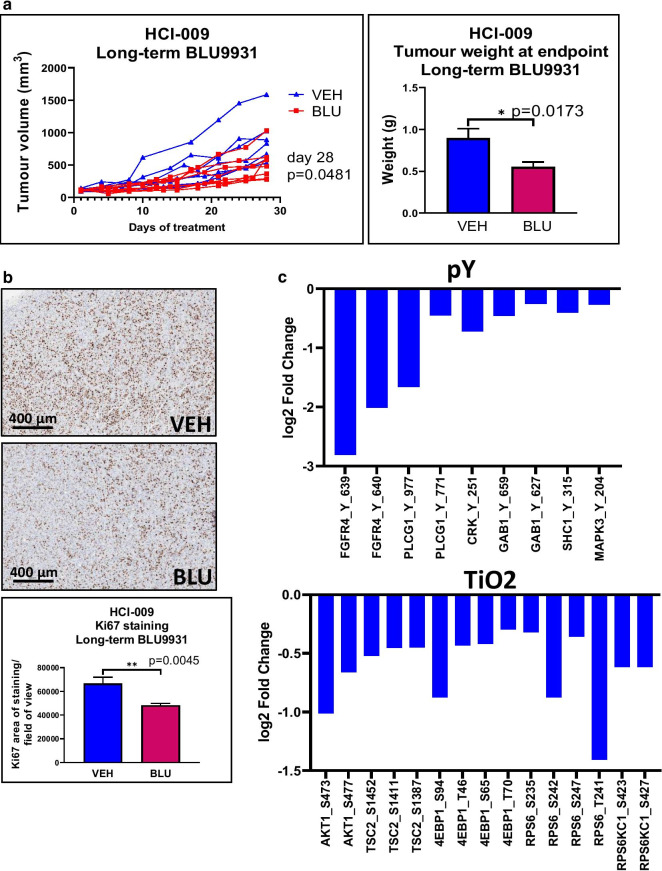Fig. 4.
Effect of FGFR4 inhibitor BLU9931 on the HCI-009 PDX model. a Effect on tumor growth. Mice were treated with vehicle control or BLU9931 for long term (28 d; 7 mice in Vehicle group, 8 mice in BLU group) and the tumor volume measured daily. Statistical significance was determined using an unpaired t test at endpoint (Day 28, p value 0.0481). Absence of statistical outliers was confirmed by a Grubbs’ test. Tumor weight at endpoint for the long-term treatment group was also measured with significance determined by an unpaired t test. Absence of statistical outliers was confirmed by a Grubbs’ test. b Effect on tumor cell proliferation. FFPE tumor sections from the long-term treatment group were stained for Ki67 and the data quantified. Statistical significance was determined using an unpaired t test. Use of a Grubbs’ test detected one outlier in the BLU-treated group, p value with outlier = 0.0218, p value with outlier removed = 0.0045. * indicates p value of < 0.05, ** < 0.01. Error bars: mean ± standard error of biological replicates. c Effects on site-selective protein phosphorylation as determined by MS-based phosphoproteomics. Data from phosphotyrosine- and TiO2-enrichment workflows are presented, highlighting phosphosites downregulated in response to BLU9931

